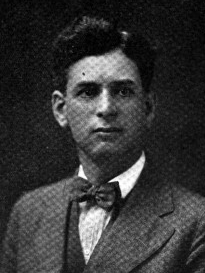

Site Location: Lat.: 43° – 36’ – 23” N; Long.: 79° – 34’ – 53” W. (GPS: 43.607060, -79.564490). 1700 Sherway Drive, Mississauga, ON. From Mississauga: From the Queen Elizabeth Way, take Dixie Road/Regional Road 4 north, Exit 136. Drive 0.3 km to turn right on Sherway Drive. Continue 0.9 km to the end of Sherway Drive and continue to the bridge on foot. From Toronto: From Highway 427, take The Queensway westbound for 1 km. Turn left (south) on The West Mall for 0.5 km. Turn slightly left on Sherway Drive and continue 0.4 km to the bridge.

Plaque Location: At the present time (April 2020), there is no CSCE plaque at the site.

Description: The Middle Road Bridge is a reinforced concrete tied arch, or ‘rainbow’, bridge that opened in November 1909. The clear span over Etobicoke Creek is 24.4 m. (80 ft.) and the roadway width is 4.9 m (16 ft.). Frank Barber (1875-1945), of the Toronto firm Barber & Young, designed it. The contractor, Octavious Laing Hicks of Humber Bay (Etobicoke), was innovative: he laid cracked ice in bags on the surface of the last concrete poured to delay setting and so ensure good bonding of the successive day’s work. He also prestrained the reinforcement in tension before placing the concrete, to prevent hair-line cracking of the concrete when tensile forces were applied to the members.

Historic Significance: This bridge is the second concrete tied-arch truss bridge built in North America and the first built in Canada. The joint detailing received particular attention during the design, Barber wrote, “so that any member would fail in the body, rather than at a joint.” James Franklin Barber was an illustrious bridge engineer, designing major concrete arch bridges including the Hunter Street (Ashburnham) Bridge in Peterborough and the Sewell’s Road steel suspension bridge over the Rouge River in Toronto. In 1915, he was an Associate Member of the C.S.C.E. His partner C.R. Young became a professor in the Faculty of Applied Science and Engineering, later Dean of the Faculty, and also wrote the first history of the Faculty.
Links to Online Documentation:
Canada’s Historic Places, “Middle Road Bridge”.
B. M. Greene, “Frank Barber”, Who’s Who and Why, 1921.
Barber & Young “Canada’s First Concrete Truss Bridge”, Canadian Cement and Concrete Review, 1909.